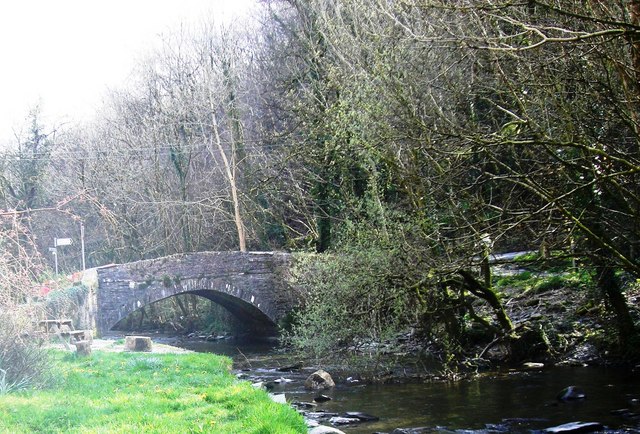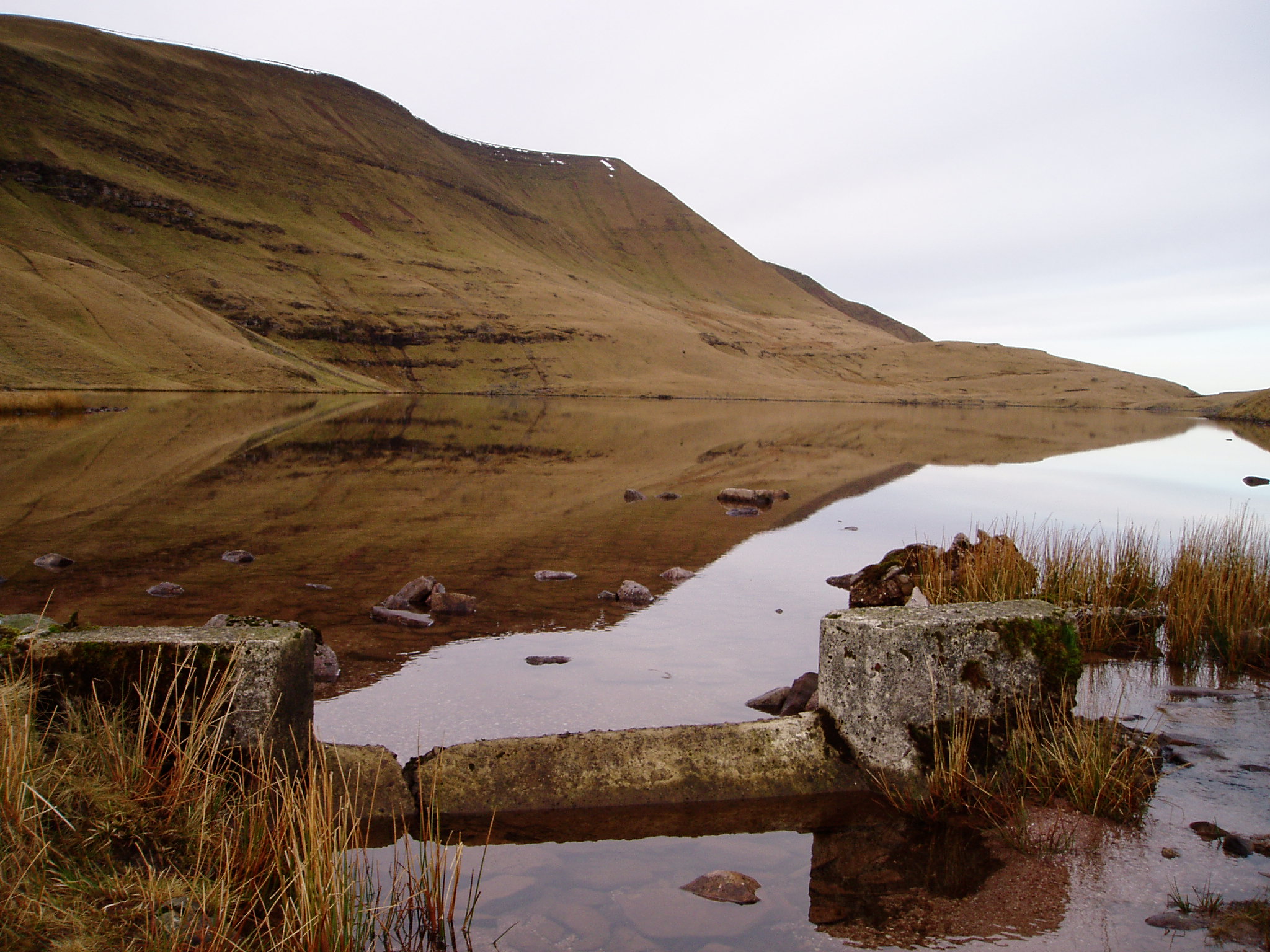|
Cwmcych
Cwmcych, Cwm Cych or Glyn Cuch (English: Valley of the river Cych) is a small village in the upper Cych valley straddling the border between Carmarthenshire and Pembrokeshire Pembrokeshire ( ; cy, Sir Benfro ) is a Local government in Wales#Principal areas, county in the South West Wales, south-west of Wales. It is bordered by Carmarthenshire to the east, Ceredigion to the northeast, and the rest by sea. The count ..., Wales, in the community of Manordeifi. Situation The village is in the parish of Cilrhedyn, which also straddles the counties of Carmarthenshire and Pembrokeshire. The Afon Cych valley is wooded with steep sides and narrow lanes; after heavy rain in May 2002 part of the road to the south of Cwmcych fell 20 ft into the river. Historic buildings In the centre of the village is the Grade II listed bridge, Pont Cych, dated 1737 but probably rebuilt in the 19th century. Until 2015 there was a long-standing pub called the ''Fox and Hounds''; this has ... [...More Info...] [...Related Items...] OR: [Wikipedia] [Google] [Baidu] |
Afon Cych
Afon Cych (standard Welsh orthography: Afon Cuch) is a tributary of the River Teifi in south-west Wales. It is 13 km long, passes through a number of small settlements on the border between Pembrokeshire and Carmarthenshire, and is significant in Welsh legend. Sources Its "official" source (although not its highest headwater) is at Blaencych . Course The river flows north-westwards through a deep, wooded, secluded valley, and joins the River Teifi at Abercych . Its total length is . It receives numerous small tributaries: the Sylgen, Barddi, Mamog, Dwrog and Lŵyd on the east side, and the Pedran, Cneifa and Dulas on the west side. It formed the ancient boundary between the commotes of Emlyn Is Cuch and Emlyn Uwch Cuch, and it today forms part of the boundary between Pembrokeshire and Carmarthenshire. The river runs through the small settlements of Cwmorgan and Cwmcych, and the village of Abercych. Bridges The Cych is crossed by a number of bridges including (fr ... [...More Info...] [...Related Items...] OR: [Wikipedia] [Google] [Baidu] |
Pont Cych
Pont Cych is a single-arch, Grade II- listed bridge over Afon Cych at Cwmcych in the Cych Valley, bordering Carmarthenshire and Pembrokeshire, Wales. History The bridge was rebuilt in 1737 (indicating an earlier bridge existed) and probably rebuilt in the 19th century. The CADW citation says: It was listed as the best example of the several bridges over Afon Cych. It carries a minor road that leads to the village of Llanfyrnach from the Cych valley. The bridge, opposite the former ''Fox and Hounds'' inn, was a meeting place for the Tivyside Hounds for fox hunting in the late 19th century. The north parapet of the bridge carries an Ordnance Survey cut mark, marking a point above mean sea level. There is a recently-working hydro-power installation at the bridge, according to the British Hydropower Association's 2014 map of the UK. In 2017, it caused some concern from Natural Resources Wales Natural Resources Wales ( cy, Cyfoeth Naturiol Cymru) is a Welsh Government s ... [...More Info...] [...Related Items...] OR: [Wikipedia] [Google] [Baidu] |
Manordeifi
Manordeifi ( cy, Maenordeifi) is a parish and community in the hundred of Cilgerran, in the northeast corner of Pembrokeshire, Wales. The population of the community in 2001 was 478. It has an elected community council and is part of the Cilgerran electoral ward for the purposes of elections to Pembrokeshire County Council. In addition to scattered settlement, the parish contains the villages of Abercych and Newchapel ( cy, Capelnewydd), and many listed buildings and structures. History Manordeifi's old parish church, situated in the edge of the River Teifi floodplain at , was abandoned in favour of a new church built on the hill top in the nineteenth century. The old church (mainly 13th-14th century) preserves many old features. A coracle hangs in the porch, providing a means of escape during floods. Manordeifi (as ''Manerdve'') is marked on a 1578 parish map of Pembrokeshire. The population of the parish was: 745 (1801): 956 (1851): 631 (1901): 602 (1951): 402 (1981) ... [...More Info...] [...Related Items...] OR: [Wikipedia] [Google] [Baidu] |
Pembrokeshire
Pembrokeshire ( ; cy, Sir Benfro ) is a county in the south-west of Wales. It is bordered by Carmarthenshire to the east, Ceredigion to the northeast, and the rest by sea. The county is home to Pembrokeshire Coast National Park. The Park occupies more than a third of the area of the county and includes the Preseli Hills in the north as well as the Pembrokeshire Coast Path. Historically, mining and fishing were important activities, while industry nowadays is focused on agriculture (86 per cent of land use), oil and gas, and tourism; Pembrokeshire's beaches have won many awards. The county has a diverse geography with a wide range of geological features, habitats and wildlife. Its prehistory and modern history have been extensively studied, from tribal occupation, through Roman times, to Welsh, Irish, Norman, English, Scandinavian and Flemish influences. Pembrokeshire County Council's headquarters are in the county town of Haverfordwest. The council has a majority of Independ ... [...More Info...] [...Related Items...] OR: [Wikipedia] [Google] [Baidu] |
Carmarthenshire
Carmarthenshire ( cy, Sir Gaerfyrddin; or informally ') is a county in the south-west of Wales. The three largest towns are Llanelli, Carmarthen and Ammanford. Carmarthen is the county town and administrative centre. The county is known as the "Garden of Wales" and is also home to the National Botanic Garden of Wales. Carmarthenshire has been inhabited since prehistoric times. The county town was founded by the Romans, and the region was part of the Kingdom of Deheubarth in the High Middle Ages. After invasion by the Normans in the 12th and 13th centuries it was subjugated, along with other parts of Wales, by Edward I of England. There was further unrest in the early 15th century, when the Welsh rebelled under Owain Glyndŵr, and during the English Civil War. Carmarthenshire is mainly an agricultural county, apart from the southeastern part which was once heavily industrialised with coal mining, steel-making and tin-plating. In the north of the county, the woollen in ... [...More Info...] [...Related Items...] OR: [Wikipedia] [Google] [Baidu] |
Newcastle Emlyn
Newcastle Emlyn ( cy, Castellnewydd Emlyn) is a town on the River Teifi, straddling the counties of Ceredigion and Carmarthenshire in West Wales. It is also a community entirely within Carmarthenshire, bordered by those of Llangeler and Cenarth, also in Carmarthenshire, and by Llandyfriog in Ceredigion. Adpar is the part of town on the Ceredigion side of the River Teifi. It was formerly called Trefhedyn and was an ancient Welsh borough in its own right. The area including Adpar had a population of 1,883 according to the 2011 census. History The town takes its name from the cantref of Emlyn, an administrative district in medieval Dyfed. The cantref became part of the Norman March in the 12th century. Its notable buildings include a ruined 13th-century castle, first mentioned in Brut y Tywysogion in 1215, when it was seized by Llewelyn the Great ( cy, Llywelyn Fawr). It was captured by the Welsh during the revolt of 1287–1288 and also by Owain Glyndŵr in 1403. The pop ... [...More Info...] [...Related Items...] OR: [Wikipedia] [Google] [Baidu] |
Cilrhedyn
Cilrhedyn is a hamlet and parish in the counties of Carmarthenshire and Pembrokeshire, Wales, in the hill country to the south of the Teifi valley. The Afon Cych divides it into two unequal parts: West Cilrhedyn, Pembrokeshire and East Cilrhedyn, Carmarthenshire. The parish church is in West Cilrhedyn. Name The placename is Welsh, meaning "bracken nook". The area is largely Welsh-speaking. The parish appeared on a 1578 parish map of Pembrokeshire as ''Kilryden''. West Cilrhedyn The parish of West Cilrhedyn (Pembrokeshire) is now part of the community of Clydau. It had an area of 887 Ha, and consisted entirely of scattered farms. Its census populations were: 215 (1801): 257 (1851): 190 (1901): 127 (1951): 105 (1981). The percentage Welsh speakers was 100 (1891); 97 (1931); 94 (1971). East Cilrhedyn The parish of East Cilrhedyn (Carmarthenshire) was merged with the parish of Cenarth in 1934, and it is now part of the community of Cenarth Cenarth () is a village, parish an ... [...More Info...] [...Related Items...] OR: [Wikipedia] [Google] [Baidu] |
Community (Wales)
A community ( cy, cymuned) is a division of land in Wales that forms the lowest tier of local government in Wales. Welsh communities are analogous to civil parishes in England. There are 878 communities in Wales. History Until 1974 Wales was divided into civil parishes. These were abolished by section 20 (6) of the Local Government Act 1972, and replaced by communities by section 27 of the same Act. The principal areas of Wales are divided entirely into communities. Unlike in England, where unparished areas exist, no part of Wales is outside a community, even in urban areas. Most, but not all, communities are administered by community councils, which are equivalent to English parish councils in terms of their powers and the way they operate. Welsh community councils may call themselves town councils unilaterally and may have city status granted by the Crown. In Wales, all town councils are community councils. There are now three communities with city status: Bangor, St ... [...More Info...] [...Related Items...] OR: [Wikipedia] [Google] [Baidu] |
Villages In Pembrokeshire
A village is a clustered human settlement or community, larger than a hamlet but smaller than a town (although the word is often used to describe both hamlets and smaller towns), with a population typically ranging from a few hundred to a few thousand. Though villages are often located in rural areas, the term urban village is also applied to certain urban neighborhoods. Villages are normally permanent, with fixed dwellings; however, transient villages can occur. Further, the dwellings of a village are fairly close to one another, not scattered broadly over the landscape, as a dispersed settlement. In the past, villages were a usual form of community for societies that practice subsistence agriculture, and also for some non-agricultural societies. In Great Britain, a hamlet earned the right to be called a village when it built a church. [...More Info...] [...Related Items...] OR: [Wikipedia] [Google] [Baidu] |





